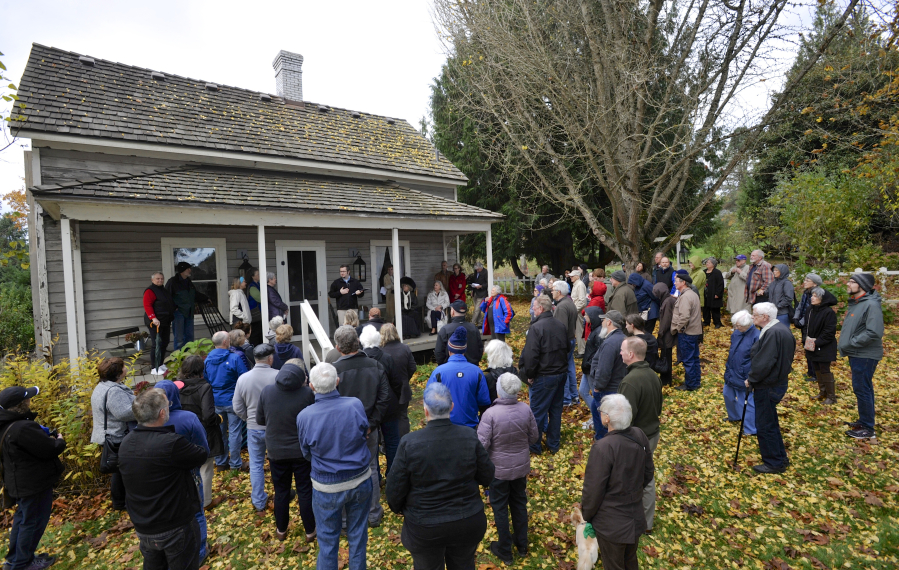Sunday marked the 150th anniversary celebration of one of the oldest buildings in the county, the John Stanger house off Evergreen Highway.
More than enough people to fill the historic home came to tour the grounds and commemorate the occasion. Brad Richardson, director of the Clark County Historical Museum, connected the property’s history to the community.
“The fact (is) that this house has 150 years of our county’s history,” he said. “Does that age equal value, or is it what the stories know and the uniqueness of this structure that gives it value? On both counts, I say yes.”
John Stanger was born in Scotland’s Orkney Islands in 1812, and at 24, he traveled to the U.S. after signing on with the Hudson’s Bay Company.
In 1836, he began his voyage to the area. Stanger traveled west through Canada then south to The Dalles, where he met, then married, a Native American woman named Kiskista, who was raised at the Whitman Mission.
They continued together to Stanger’s final stop, the Hudson’s Bay Company’s outpost at Fort Vancouver, where they arrived around 1838.
Stanger worked as a millwright and eventually staked a claim to a parcel along the Columbia River, on a plot that, back then, was a 2-hour trip from downtown.
As more white settlers came to the area, and the Hudson’s Bay Company’s activities began to wind down, Stanger transitioned to making a life as a farmer, Richardson said.
“That’s when he started to grow his family, started to farm the area,” Richardson said.
The Stangers and their nine children raised cattle, fruits and vegetables for themselves and to trade.
“This land that you see all around you was what provided the life that they were able to have,” Richardson said.
Stanger first built a simple shack, then a log cabin, then, around 1867, the house that stands today.
The house is the oldest in the county still at its original location, and is a valuable example of an early pioneer style wood-plank building.
The property was listed in the Clark County Heritage Register in 1983, then named to the National Register of Historic Places in 1990.
Beyond the historical significance of his home to modern Clark County, Stanger also had a small role in the growth of early Vancouver, Richardson said.
In 1868, about 10 years after Vancouver incorporated, the city needed a water source. It made a deal for water rights to Stanger Creek that allowed Stanger water for his family and farm.
That agreement was in place until 1939, when the city laid new pipes in the area.
Over the years, the original 318-acre land claim was sold off and subdivided. The last Stanger at the house, Matilda, died in the 1960s, and Vinson and Jane Weber bought the property.
They remodeled a newer house that had since been built nearby, and they rented the old home. Residents included former Congressman Don Bonker and his wife, Carolyn, who held their wedding at the site.
After the Webers died, the property was donated to the Clark College Foundation with the hope it would be made into an arboretum. The property is now managed by the Friends of The Jane Weber Evergreen Arboretum.
Board chairwoman MarCine Miles encouraged guests to return and enjoy the grounds.
“Come back, sit on the porch in the summer or the spring, see what the sounds are like, see how lovely it is here. Walk along the paths in beauty. Come let your soul be refreshed by it, and listen to the stream as it joyously finds its way down to the river,” she said.
Or, she added, help out with the building and surrounding green space upkeep to ensure they’re there to enjoy for years to come.
“We would love to have you come back and help us, because this is important to the community. The fact that you’re here is important to the community, not only for today, but for our children, our grandchildren and the next 150 years.”




